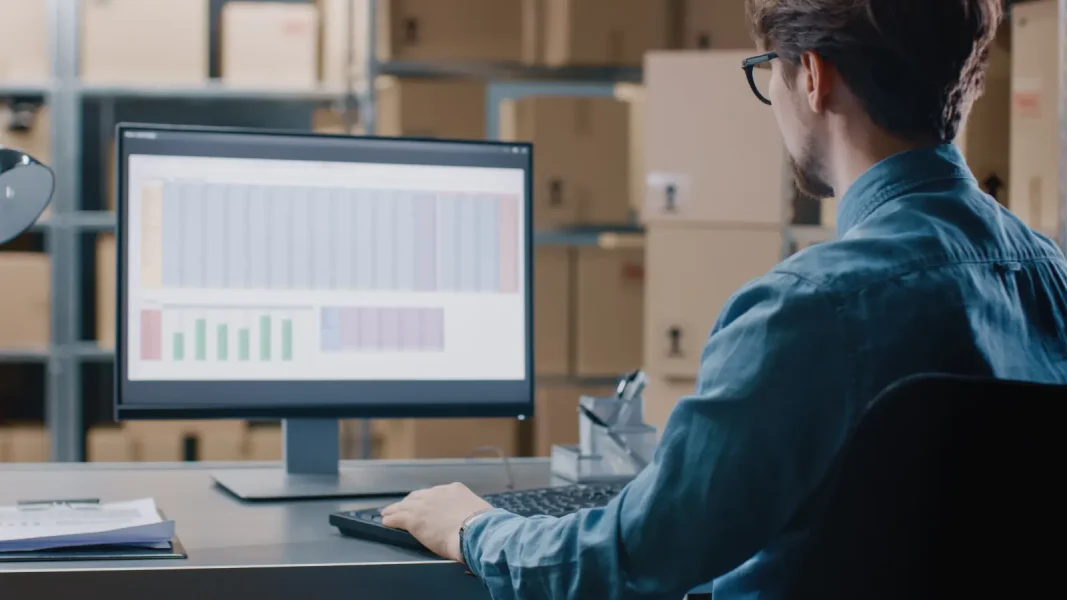The digitalization of Retail has accelerated with the health crisis, inflation has put the subject of pricing back at the heart of concerns and consumer expectations have increased on subjects such as environmental responsibility.
Brands must navigate between sometimes contradictory expectations and the need to optimize their operational efficiency to meet the imperatives of competitiveness and profitability.
To make strategic decisions in this changing context, retailers now have a powerful ally: data. data.
Effective functional coverage is essential to maximize data utilization.
The use of data in the retail sector helps teams focus on high value-added tasks. It also contributes to more informed decision-making.
Whether it is deploying a pricing strategy or optimizing supply chain management, data control is now a key success factor.
However, retailers face a dilemma when it comes to choosing the right IT system to optimize their operations: opt for an integrated ERP (Enterprise Resource Planning), offering a holistic solution, or embrace the best of breed approach. , favoring specialized solutions.
In this article, find out why the best of breed approach is on the rise today and what its advantages are compared to an integrated approach.
ERP, an “all-in-one” approach to business processes
ERP, a centralized solution
An ERP is a centralized solution for to manage a whole range of business processes.
It brings together several modules around a common database to meet the company’s business needs:
- Finance & Accounting
- Production & CAPM
- R&D & Engineering
- HR
- Purchasing & Sourcing
- Marketing & Sales
- Pricing Solution
- Supply Chain solution
- …
Regardless of the modules included in the solution, ERP is always characterized by extended functional coverage.
The promise is simple: to meet all (or at least a broad scope) of the company’s business needs.
What are the advantages of the “all-in-one” approach?
ERP vendors generally present their platforms as ” the one-stop solution single solution for all the company’s businesses”..
The advantages highlighted are as follows:
- Streamlining business processes
- Integration of business needs for smoother collaboration
- Data centralization
- Significant reduction in costs
Since all processes are integrated, around a common database, you do not need to synchronize several applications.
The provision of information would then be faster. For implementation, updates or support, you deal with a single contact, since you work with a single publisher.
However, the reality on the ground is not so rosy.
The limits of the ERP approach
Originally, ERPs developed because they offered a competitive advantage compared to players who still managed part of their business processes “by hand”. It’s clear that you’re simplifying your life when you switch to an ERP system, whereas you were still doing your pricing or order forecasts on an Excel file using an integrated software solution.
But the digitalization of retail followed his path. Having an ERP is no longer a guarantee of competitiveness today. The “all-in-one” aspect even tends to become a hindrance in a context where agility is essential.
The volumes and sources of available data have exploded. Competition has intensified. Sales channels have multiplied. The requirements in terms of operational efficiency and quality of service are considerably increased.
Faced with these changes, the centralized approach comes up against a glass ceiling.
Here are some of the limitations limitations:
- Uneven use of modules : Companies pay a license for a global solution but actually only use 30 to 50% of the features. Either they don’t need the other modules, or they consider that certain modules are simply ineffective… and therefore, they use a best of breed solution instead!
- Lack of personalization : ERP modules are often quite “standard”. Difficult to personalize them to meet the specific needs of your sector or your brand.
- A lack of scalability: the needs of retail players are evolving very quickly and ERP publishers are struggling to keep up. It is complicated to evolve the solution to meet new needs.
In short, the ERP approach can be considered if you are sure that the functional coverage offered by the solution corresponds perfectly to your current and future business needs. However, when we look at the retail context, the only certainty we can have is that the future is uncertain.
Best of breed: an approach in line with developments in retail
The ERP approach prevailed for a time. But it no longer corresponds to the reality of retail today. The search for competitiveness gains today involves optimizing all processes and, therefore, adopting the best tools in each category.
In other words, the “best of breed” approach has supplanted the all-in-one approach.
Mathieu Louchez, pricing and assortment leader at Boulanger, explains what led him to move from an ERP solution to our “best of breed” pricing solution Optimix XPA:
“The problem we had was that our ERP had fulfilled its function well, but did not allow real evolution. We were limited in our daily tasks. The competition has diversified considerably, but the tool only allowed us to configure a single strategy, or even a single rule for the entire brand. It was rather time-consuming. The setup process was long and tedious, discouraging frequent changes. This is what prompted us to change. »
The advantages of the “best of breed” approach
If the best of breed approach is popular with retailers, it is because it responds very well to a logic of verticalization and hyper-specialization of business processes.
The search for competitiveness gains is such that companies are seeking excellence in every major aspect of their activity.
Best of breed solutions are often more responsive to market developments. Retailers who adopt them can more easily adjust their strategies to remain competitive. In terms of pricing, for example, this is an advantage because retailers are required to evolve their strategy much more often than in the past.
In addition, best-of-breed solution providers also offer robust solutions in terms of connectivity with other tools. Synchronization isn’t really a problem anymore.
Therefore, adopting a best of breed approach offers many advantages:
- Advanced specialization best-of-breed software solutions stand out for their high level of specialization. They are often designed by business experts to meet the specific needs of their colleagues. Their advanced functionalities go beyond the possibilities of “all-in-one” solution modules. Implementing a best-of-breed software solution guarantees extensive functional coverage, adapted to the specific needs of each retailer.
- Adaptability to needs : unlike standard ERPs, best of breed solutions offer extensive flexibility and customization. Each brand can adjust the functionalities, at the time of initialization and during use, to precisely meet its specific needs, which guarantees perfect adequacy with market developments.
- Scalability and innovation: Best of Breed solutions are inherently more agile to keep up with rapid developments in the retail sector. This agility translates into a better capacity for innovation which allows users to stay in line with best practices and market requirements.
- Combining customized solutions: by opting for best-of-breed solutions, you invest in tools that you really need. The use of features is optimal. You limit wasted resources and costs associated with unused features.
The “best of breed”, the response to a context of permanent upheaval
The “best of breed” approach becomes dominant. It is not just a question of faster decision-making but above all a necessity to adapt to a “permacrisis” context.
Indeed, immense upheavals are occurring, at a speed unprecedented in history, forcing retail companies to reinvent themselves almost in real time:
- The Suez Canal partially blocked by a cargo ship,
then by a conflict ; - A global pandemic that paralyzes supplies,
then boosts inflation; - A conflict at the Union’s borders that changes trade treaties and inherent supplies
All these events impact the supply chain and yet, who could have predicted them and anticipated their effects, before they manifested?
In terms of pricing, current inflation is reshuffling the cards. We had not experienced anything so violent for around forty years.
An ERP module cannot cope with such variability. At the time when ERPs arrived on the market, all these upheavals did not exist.
However, their sequence forces actors to revise their strategies and processes much more often. In terms of pricing, some retailers now change their prices several times a month, or even a week, whereas they used to do so only 3 or 4 times a year.
ERPs, generalist by nature, do not have sufficiently detailed modules to curb this type of situation or deal with them intelligently. That’s why companies need to implement a best-of-breed software solution.
The best-of-breed approach, more agile, is replacing the “all-in-one” approach of ERPs.
It responds better to a context of digital acceleration and, above all, rapid change.
For the actors, the challenge lies above all in the ability to adapt in an environment which evolves very quickly and presents a lot of unpredictability.
From this perspective, the natural inertia of ERPs is a hindrance. Conversely, best-of-breed solutions are capable of responding quickly to unexpected problems.
The editors master the business issues and are better able to evolve the solution according to situations, even new ones.
At Optimix, for example, our business solutions are designed by pricing and supply chain specialists, business experts who perfectly understand the retail context and the needs of teams in the field.
Want to know more about our best of breed approach? Let’s discuss it.






